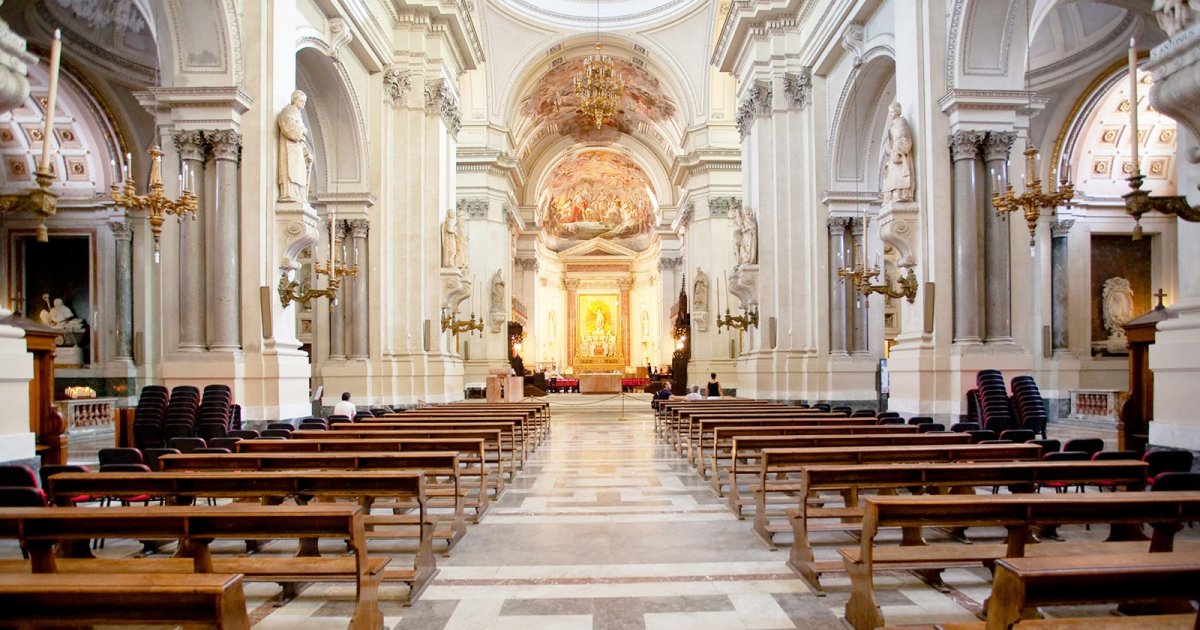INTERIOR
 Language: English / USA
Language: English / USA
In the Neoclassical, triple-nave interior of the Cathedral, Ferdinando Fuga used solid pillars to replace the original groups of four columns, which were kept as a decorative element only, and concealed the magnificent painted wooden beam ceiling with a barrel vault. Despite the plain, austere appearance, there are some marvelous works to be admired, such as a superb holy water font in Renaissance style, which you can see near one of the entrances. It may be the work of Domenico Gagini, a sculptor from the Ticino canton, the father of a large family of artists who worked in Sicily.
There is a large brass strip on the floor that cuts the central nave in two starting from the chapel of San Francesco da Paola, with colored stone inlay work at the sides depicting the signs of the zodiac. This Meridian dates to 1801. On a bright day, you can see the light entering the Cathedral through a hole in the dome and lighting up a point on the meridian, accurately indicating the time of day.
An interesting fact: the meridian was an idea of the astronomer Piazzi who, on his return from travels in Europe, had realized that the calculation of time would have to be adapted to the systems adopted in the rest of the continent. A reform of time was thus introduced in the Kingdom of the Two Sicilies, and a meridian was created in the Cathedral to accurately indicate midday in a way that would be visible to all.


